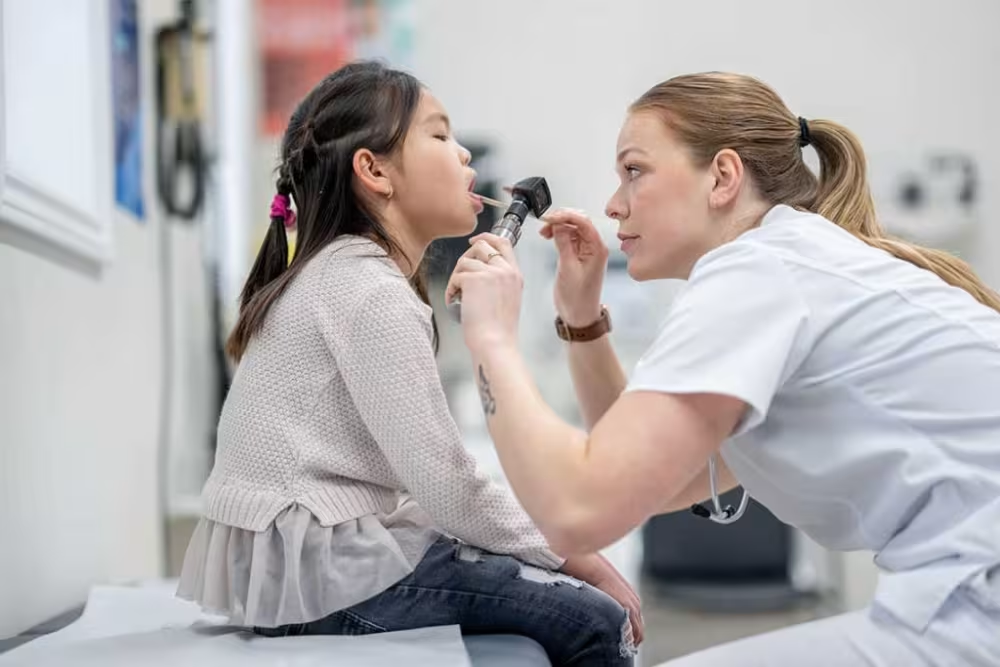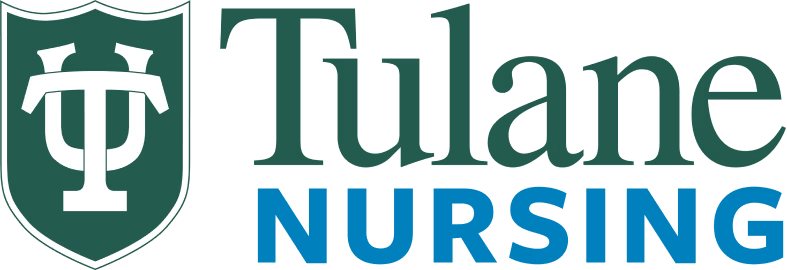How to Write a Nursing Resume
Understanding how to write a nursing resume as a recent graduate is critical to launching your career. Resumes must be targeted to each job description and concisely highlight your education, work experience, and skills. You must also choose a layout and include important sections such as education and work history.

After graduating from nursing school and earning a nursing license, you are ready to embark on your nursing career; however, you will need to craft a resume to successfully apply for your first professional nursing position. Understanding how to write a nursing resume is necessary in the job application process and essential to a successful nursing career.
As a newly licensed RN, you must create a resume that tells the story of the type of nurse you are prepared to become and want to be. At Tulane University, our students in the accelerated Bachelor of Science in Nursing (aBSN) program gain the knowledge and skills needed to become compassionate leaders in healthcare, equipped with the necessary experience to create a competitive nursing resume.
This post discusses the elements involved in creating an exceptional nursing resume as a newly graduated nursing student, from format and layout to best practices for writing your resume.
Nursing Resume Format
While the nursing resume format is not the most interesting aspect of resume writing, it is essential. If your resume is clean, organized, and easy to read, hiring managers are less likely to discard it without reviewing your experience. It is the first impression you will make on anyone reviewing your application, so it should positively reflect your ability to present yourself well.
When you submit a resume, the first round of review is typically performed by applicant tracking software (ATS). ATS narrows down applicants by scanning for target keywords determined by the hiring managers. Resumes must be properly formatted so the ATS can review them.
The principal elements to consider are as follows:
- Margins: The recommended top margin size is 1 inch, while side margins should be 0.63 inches.
- Alignment: Resumes must be easy to read. Left alignment is standard practice and the most comfortable for English speakers and ATS.
- Content Length: Resumes should be short and around one page; however, many nursing resumes can reach two to three pages.
- Font and Font Size: You have some flexibility regarding font and font size, but keep fonts simple. Times New Roman or Arial in 11 to 12pt size are the most common.
- Color: Nursing resumes do not need to be colorful or fancy; however, if used sparingly, color can help separate sections and improve organization.
Nursing Resume Layout

Understanding how to write a nursing resume transcends formatting—the layout is also important. A resume communicates your education and work experience, and you must consider this principle as you determine the best layout for your experience.
You can organize your resume in several ways:
- Reverse Chronological: This layout presents your work experience in reverse-chronological order, starting with the most recent.
- Functional: A functional layout highlights your relevant skills over work experience.
- Combination: This layout borrows from reverse-chronological and functional layouts, emphasizing relevant skills, accomplishments, and work experience.
The best nursing resume layout depends on your career trajectory and history. Recent graduates who have recently obtained their nursing license should opt for a chronological layout because it emphasizes the clinical experience gained from nursing school. Chronological layouts are also best for individuals who have worked in the same field for some time and can illustrate a clear career trajectory.
Individuals switching careers or with gaps in their resumes may choose a functional layout because it highlights their transferable skills rather than their experience in the field. However, the ATS may be unable to read functional layouts accurately, and the layout can be limiting if you have relevant experience.
Finally, combination layouts can be effective for nurses aiming to transition into a different nursing field or individuals with relevant experience that may not be reflected in previous job titles.
After determining a layout, you can build your resume. Below are the essential sections your resume should feature:
Contact Information
Your contact information should be easily identifiable at the top of your resume. Most job posts require applicants to include their name, phone number, and email; however, you should carefully review each job description to ensure you don’t miss any requirements, such as a home address.

Objective Statement
You may be familiar with the professional summary, a statement detailing an individual’s work history and career trajectory. However, those with limited work experience, such as recently licensed nurses, should write an objective statement instead.
An objective statement is a concise introduction to your resume and should clearly state your goal. Unlike a professional summary, an objective statement for new nursing graduates focuses more on your education, clinical hours, and skills. It is also beneficial to tailor your objective statement for each position by specifically using keywords and highlighting applicable skills and experience listed in the job description.
For example, as a newly licensed RN, your objective statement may read as follows:
Highly motivated BSN graduate RN seeking a [JOB TITLE] position at [NAME OF CLINICAL FACILITY]. With [NUMBER OF CLINICAL HOURS] of clinical experience and skills in communication and problem-solving in fast-paced clinical environments, my goal is to provide compassionate, patient-centered care while expanding my skill set.
Licensure and Certifications
One of the most important sections to include on a resume is your licensure and certifications. While it may be implied that an applicant applying to a nursing position is licensed, hiring managers cannot assume this. Your application may not pass the ATS if you don’t include relevant licenses and certifications that qualify you for the role.
Knowing how to put an RN license on a resume is crucial. This can be achieved simply by including a “Licensure and Certification” header with a list of all relevant licenses and certificates below.
Education
As a recent nursing student graduate, your education is highly relevant. Remember, your resume must be concise, so a simple education section noting the degrees earned and their corresponding schools will suffice.
Clinical Experience and Work History
The body of the resume should focus on your clinical experience and work history. As a recent graduate, you probably do not have years of experience in clinical settings; however, you have real patient-care experience gained through nursing clinicals.
First, you must understand how to add clinical experience to a resume to create an effective application. First, create a section entitled “Clinical Experience” or “Relevant Experience.” Then, list each clinical experience with a brief description of your duties, accomplishments and applicable skills. These descriptions can comprise bullet points or concise sentences.
If you have a relevant work history, such as a part-time job in the healthcare sector while in nursing school, you can list this experience in a separate “Work History” section. If you have relevant healthcare-related volunteer experience, you can include this in the “Work History” section or a separate “Volunteer Work” section.

Relevant Skills
Finally, you must include a “skills” section on your resume. Review the job description and identify which skills it explicitly highlights, paying close attention to descriptive words that could translate to skills. For example, if a job description says, “working in a fast-paced environment,” including “time management” in your skills section will be beneficial if you are adept at this.
Nurses must possess hard and soft skills. Hard skills refer to practical skills required to perform nursing duties, while soft skills refer to qualities or skills not directly related to nursing.
Common hard skills include the following:
- Emergency or clinical care
- Computer skills
- Wound care
- Intravenous insertion
- Electronic medical record proficiency
Common soft skills on nursing resumes include the following:
- Communication
- Leadership
- Ability to learn quickly
- Adaptability
- Critical thinking
- Proficiency in a foreign language
Consider the experience you gained through nursing school: what skills did you practice in skills labs and later perform during nursing clinicals? You must include all your skills that apply to the job description, using exact word matches. This ensures the ATS or hiring manager does not miss relevant experience.
The Dos and Don’ts of Nurse Resume Writing

Resume writing can sometimes feel like following a formula; however, you can still find ways to stand out while adhering to that formula. Since most resumes must first survive an ATS round, you must follow specific “dos and don’ts.” Below are a few best practices to remember as you learn how to write a nursing resume.
The “Dos” of Resume Writing
Remember that ATS will probably read your resume before a person does, so you must consider both when building your resume. Consider the following best practices:
Action Verbs
Your resume must be active, not passive, to create a good impression. You want to demonstrate your work ethic and skills through words, so you must be deliberate with your word choice. Action verbs refer to verbs in the “to be” form, such as “demonstrate” and “supervise.”
For example, rather than writing, “was responsible for giving patients their medication,” write something more succinct and active, such as “administered patient medication.”
Save the Document in the Correct Format
Many job posts specify the format in which they want your resume. This can be for several reasons, including ATS compatibility. If no specific format is listed, save your resume as a Word document (e.g., .doc or .docx) or a PDF file.
Keep Font Size Legible
Font sizes smaller than 10pt are challenging to read. As mentioned previously, it’s best practice to keep font sizes around 11 or 12pt. If you need to decrease the size below 10pt to fit information on one page, review how much of the information is relevant and include a second page if necessary.
Ensure You Meet the Qualifications
You do not necessarily need to meet all the requirements to qualify, but you should meet the most important requirements. A terrific resume and extensive work experience cannot overcome a lack of certification or relevant work experience.
The “Don’ts” of Resume Writing
Resume writing can involve trial and error. You won’t know your resume’s effectiveness until you send it. However, you can improve your chances by avoiding these common resume writing mistakes:
Lack of Detail
A common mistake is including insufficient detail in the experience sections. As a recent nursing graduate, the details will help you stand out. Consider specific illnesses or injuries you treated, medications or therapies you administered, and skills or tasks you excel at.
Incorrect Credentials or Terminology
The nursing field is full of abbreviations and terminology; you must demonstrate your knowledge and competency by using them correctly.
Unnecessary Design
Remember you are applying for a nursing and not a graphic design position. Unnecessary design elements, such as clip art, photos, and elaborate fonts, can distract from your qualifications and make it more difficult for the ATS to review your resume accurately.
Unprofessionalism
You must present yourself as a professional nurse. Small aspects, such as including an unprofessional email or casual writing, can portray you inaccurately as a nurse.
Keyword Stuffing
While it’s essential to use keywords mentioned in the job description in your resume, you must strike a balance. An overabundance of keywords, known as keyword stuffing, can reduce the probability of your resume passing the ATS round. Only use appropriate keywords in the correct context.
Nursing Resume Tips

Now that you understand how to write a nursing resume as a recent graduate, consider the following resume tips to help establish you for success.
1. Research the Employer
Before submitting a resume, research the employer and identify how you align with their mission. This will help you recognize key phrases to target and determine whether this job and employer are the right fit for you.
2. Target Your Resume for the Job
It’s best practice to tailor your resume to each job posting. If your objective statement specifically notes the job position and healthcare facility you’re applying for, you must remember to replace this for each application.
Your resume should also include keywords and skills used in the job description so it can pass the ATS round and reach the hiring manager. Matching keywords to demonstrated skills helps illustrate the value you will bring to the organization.
3. Retain Ample White Space
White space refers to blank space in a document. Resumes must be quick and easy to read. Large blocks of text can lead to eye fatigue, especially when reviewing a large stack of resumes. Keep descriptions concise and clearly separate sections to improve organization and create white space. Don’t allow the hiring manager to reject your resume simply because it was difficult to read.
4. Proofread and Edit
You must proofread your resume and check for grammatical errors and inconsistencies. Such errors may indicate inattention to detail to hiring managers, which could prevent you from entering the next round of the hiring process. You must continuously edit your resume throughout the job search to ensure all relevant information is presented professionally.
5. Use Simple Resume Headers
The ATS must be able to scan your resume and identify specific phrases for you to advance to the next round. Keep descriptions and headers simple and easily identifiable so the ATS does not miss relevant sections, for example, entitling sections “Education” and “Work History.”
Start Your Nursing Journey With Tulane

A fulfilling nursing career awaits you with the proper education. At Tulane, our aBSN program uses a hybrid approach that instills in students the skills, knowledge, and values needed to provide patient-centered care. Our nursing curriculum establishes foundational and advanced nursing concepts through online coursework, which are then fortified by simulation experiences and nursing clinicals.
If you have a minimum of 60 undergraduate credit hours from an accredited institution, you may be eligible for the aBSN and be able to earn a Bachelor of Science in Nursing in as few as 16 months. If you are ready to pursue a passion for nursing, Tulane’s aBSN may be the right pathway for you.
Contact an admissions counselor today to learn more about our aBSN admission requirements and the next steps in launching your nursing career.

